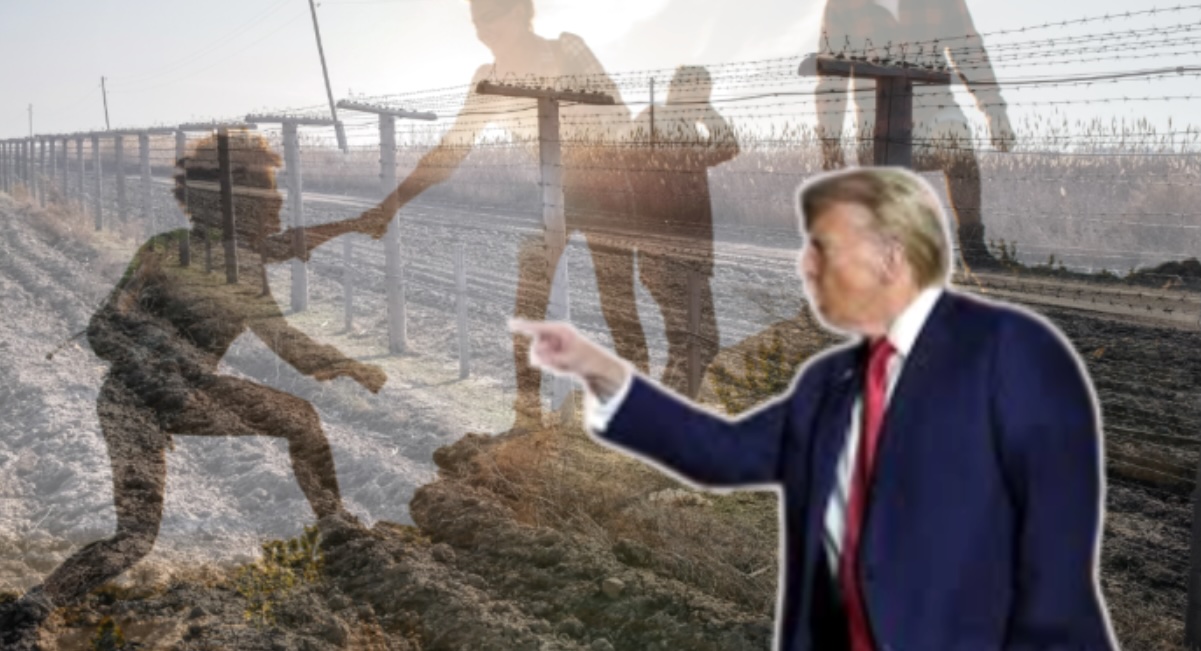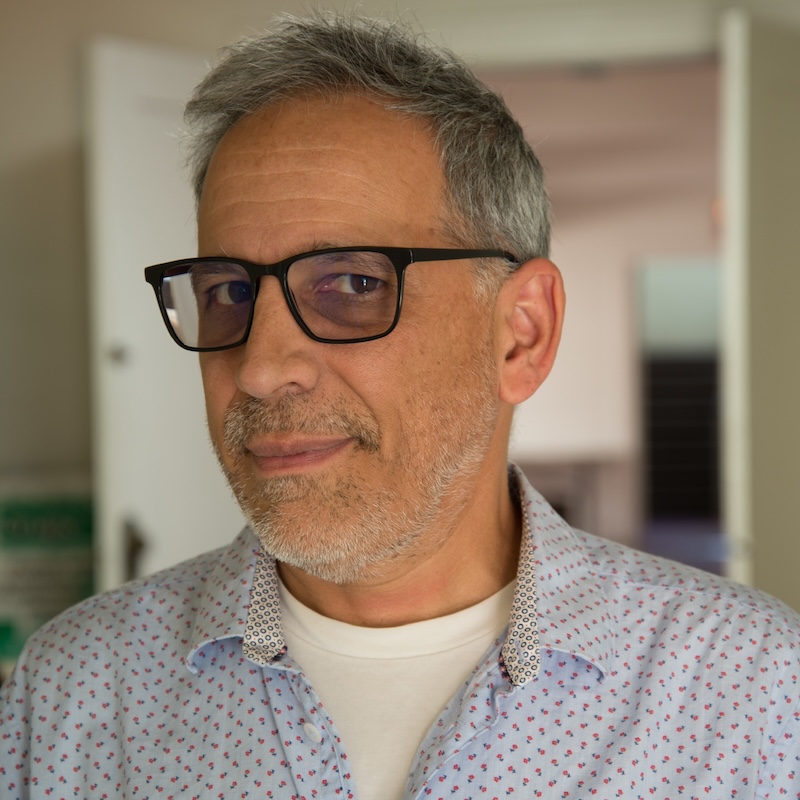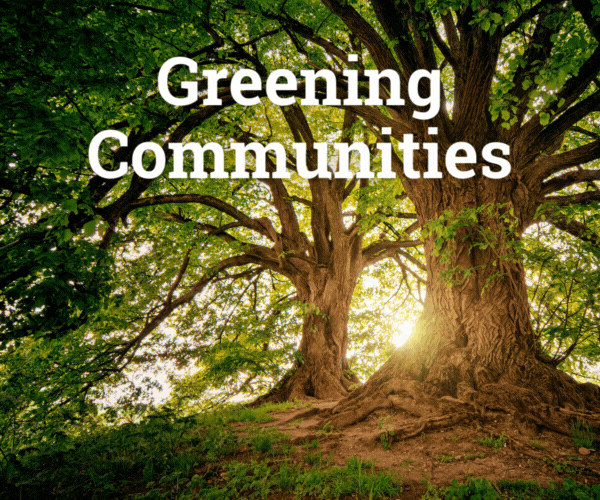The Sanctuary Movement of the 1980s was a faith-based effort to aid the nearly one million refugees fleeing violence and civil war in Central America. Churches and parishes nationwide banded together to shelter migrants from deportation by federal authorities. As Donald Trump prepares to return to the White House in January, immigrant communities are again confronting the possibility of mass deportations, potentially on an unprecedented scale. Journalist and author Rubén Martínez is the co-creator of the play, “Little Central America, 1984,” which recalls the Sanctuary Movement of that decade and pays tribute to some of its leaders. For Martínez, the current political moment demands that a new generation pick up the torch.
What inspired the play?
So, 2018 would be the origins. In 2018, the issue of family separations was still making headlines. Kids, unaccompanied minors in detention centers, unaccompanied minors dying in detention centers for lack of care. And the darkest of the first Trump years in terms of immigration policy, the tremendous cruelty.
The original Sanctuary Movement started in 1982. A Few Berkeley parishes and parishes in Tucson, Arizona were what became a nationwide movement of churches literally offering shelter both in their churches and in the homes of parishioners in clear defiance of federal law. There were court cases, some people were convicted, and some people did time. But this became a nationwide movement during the Central American civil wars of the 1980s.
The connection being that the wars in Central America were driving large numbers of refugees into the US, right?
Yes, that’s exactly it. Refugees from Guatemala and El Salvador. And so, in 1982, on the anniversary of the assassination of Archbishop Óscar Romero, these parishes make a public declaration of sanctuary.
That original movement came to mind during the first Trump administration because of the dire circumstances surrounding the turning away of people at the border, rounding them up, the family separations, and all these cruel acts the state was taking against these people, many of whom were once again refugees from Central America.
Things have changed since then, but the more things change, the more they stay the same. Here we are with a second Trump administration and we’re about to see if there is a bite to his bark about mass deportations.
All of which makes the production that much more salient.
Right. So, we premiered in Los Angeles during the first Trump administration. It’s a site-specific project, meaning we perform it at sites of sanctuary from the original movement. The first was at Echo Park Methodist Church in Los Angeles, which was a site of sanctuary in the 1980s. My co-creator, Elia Arce, knew the pastor there back in the 1980s. She knew a refugee family that was given sanctuary there. So, our first show was there right before the pandemic. Then the pandemic came, and a couple years later we regrouped. We got a touring grant from the New England Foundation for the Arts to take it on the road. So, we went to places where the original Sanctuary Movement had been strong. And a lot of these places, today, are where you find Little Central Americas a generation later. Houston, Texas has a massive Central American population.
And are these places where you’ve brought the show?
Yes, we performed at the First Unitarian Church of Houston, a former sanctuary site. From there, we went to Washington, DC, one of the oldest and most well-known Central American barrios in the US, in the Mount Pleasant and Adams Morgan area.
There is a throughline in the ideal of sanctuary that goes back to antiquity with sanctuary for persecuted Christians, and across the Middle Ages and all the way to today. The Church is founded on the ideal of sanctuary.
Of course, some of these places would later declare themselves as sanctuary cities during Trump’s first term. What is the through line with the earlier movement?
The Sanctuary Movement put the term “sanctuary” on the map. Sanctuary cities specifically refer to municipal authorities, police departments not collaborating with federal agencies on immigration status. So, if someone gets caught on a misdemeanor, not turning them over to the Feds if they are undocumented for deportation. Los Angeles had a policy going back to the 1970s, predating the Sanctuary Movement, forbidding the LAPD from turning people over to immigration. And there is a public safety reason there. If you’re scared to call the police for anything, crimes will go unpunished, people will be more unsafe. It is a public safety issue. So, sanctuary cities took up the symbolism of the early Sanctuary Movement and made it specifically about, you will not be deported when you interface with local authorities.
It’s been forty years since the initial Sanctuary Movement. Is it still there, among the churches? Who is there to take up the mantle?
The networks still exist, communication between progressive parishes across the country still exists. But a lot of mainline protestant churches — Presbyterians, Lutherans, Methodists — their congregations have dwindled. Catholic churches probably maintain their numbers, especially in immigrant communities. You still see filled pews on Sundays in Fruitvale, or the Mission. But the mainline white, Anglo-Saxon protestant churches have seen their numbers dwindle dramatically. And those churches, for example, St. John’s Presbyterian on College Avenue in Berkeley… that’s a very small congregation today compared to what it was in the 1980s. Dozens rather than hundreds.

Written and performed by Elia Arce and Rubén Martínez, Little Central America, 1984 explores the history of the “Little Central Americas” in the United States founded by refugees largely from the civil wars of the 1980s. The next performance is scheduled for Dec. 13, 14, 15 at St. John’s Presbyterian Church in Berkeley.
And so how does that impact the work of providing sanctuary?
They still do. Many still do. St. John’s still functions that way. But the capacity to handle something on a mass scale would have to be ramped up. Even during the first Trump years, churches, Catholic worker houses, social service agencies were absolutely overwhelmed. It was a crisis moment. And stressing the diminished capacity of some of the churches I was referencing. So now we’re going into a new round of this, the same stressors will appear. Catholic churches, charities, immigration services will be put to the test once again. In terms of sheltering people under the direct threat of deportation, if a mass roundup is to be implemented… people are having emergency meetings right now, making contingency plans. This is what we’re facing now.
Trump took more of the Latino vote this election than any Republican in recent memory. How is that conversation playing out in predominantly Latino churches?
That is going to be the conversation. Mixed status families are not an outlier. Undocumented immigrants are completely interwoven, on the family level, on the social level, on the economic level. There really is no border between documented and undocumented. The undocumented community is totally enmeshed inside the documented community. I am only privy to the conversations that I have heard in the churches we’ve worked at. I am not at the Pentecostal church down the street, for example. Decades ago, a lot of these immigrant heavy Pentecostal churches were also a sanctuary movement unto themselves. They were looking out for their parishioners, because they were mostly undocumented. I don’t think we know what these parishes look like today. Is one more settled immigrant, another more undocumented? I think it will break down along these lines.
There really is no border between documented and undocumented. The undocumented community is totally enmeshed inside the documented community.
You are Catholic. You teach at a Jesuit university. What do you hope to see from the Church on this?
One of the first trips Pope Francis took in his papacy was to a small island in the Mediterranean called Lampedusa, where he met with North African refugees… It was a huge sign for him to give, being his first high profile trip outside the Vatican. Francis has broadcast a very obvious and clear preferential option for refugees and migrants worldwide. This is in the following of Catholic social teaching coming out of the Second Vatican Council, reaffirmed with the recent Synod, and coming out of Liberation Theology founder Gustavo Gutierrez’ preferential option for the poor. That is very clear. The US Bishops Conference is something else. It has taken up with a lot of culture war stuff, abortion, gay marriage. It is a much more conservative conference than it was. And the more strident voices, like San Francisco Archbishop Cordileone, are some of the loudest voices right now. And they don’t spend a lot of their time talking about immigrants. They spend a lot of time talking about abortion and gay marriage, which Francis said, “Why are we talking about this? We should be talking about the poor, about refugees.” So, there is a battle for the soul of the church right now. And Francis’ legacy, because he is not going to be around much longer, is going to be put to the test. And the US Catholic Church will be put to the test in terms of its ethos regarding the preferential option for the most vulnerable.
Going back to the play, what is the message you want people to take from the production?
There is a throughline in the ideal of sanctuary that goes back to antiquity with sanctuary for persecuted Christians, and across the Middle Ages and all the way to today. The Church is founded on the ideal of sanctuary. Quasimodo bangs on the church doors asking for sanctuary in the Hunchback of Notre Dame. This is a longstanding ideal that has been passed on for generations. The generation from the 1980s are elders now, some have passed on. We’re honoring them at the performance, each night. That is the key moment. And we are doing so to celebrate the legacy of sanctuary but also to pass on the torch to the younger generation that, like each generation before it, has to pick up this tradition. Or else we lose the essence of who we are as a community of faith. This is the essence of our faith.






